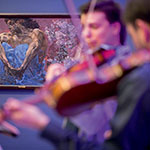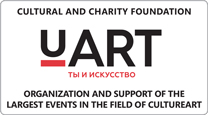28 August 2017
Innovation. Reloading.
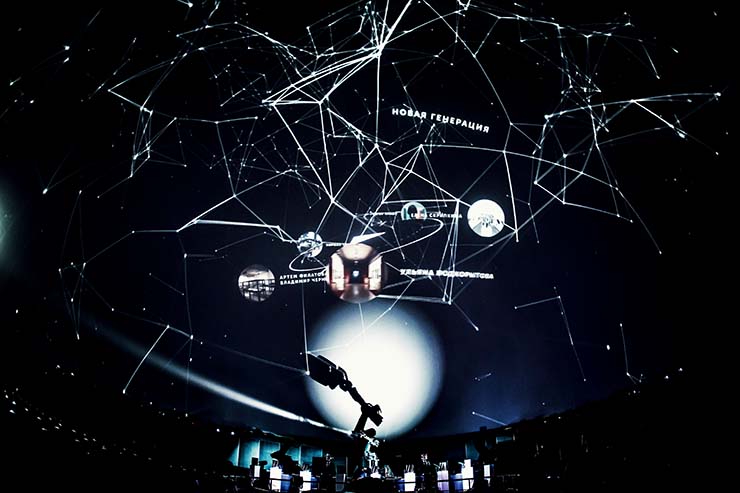
|
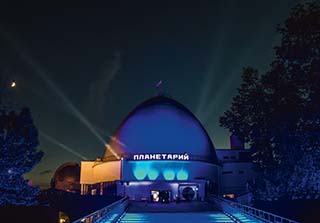
The award ceremony was held at the Moscow
Planetariu
|
Innovation is the only national award in contemporary art;
the title implies looking into the future, being open, being ready to change
oneself and the world. Trendy in the Russia of the early 2000s, the word
has lost much of its relevance by now. And similarly, the format
of a formerly progressive award has become stale; that was shown
by the crisis it went through in 2016 when the jury broke up over
some differences and the top prize wasn’t awarded. What Innovation needed
was a renovation.
In 2017, the award was reloaded. ROSIZO that
became in charge of it — and included the State Center for Contemporary Art —
made a rebranding, renewed the jury and the expert board, modified the
contest conditions, and made amendments to the titles and the number
of nominations.
As a traditional partner of the award, the U-ART
foundation didn’t stand aside from those changes, taking an active part in
the discussions on the new format. The Innovations 2017 team headed
by Ekaterina Kibovskaya introduced a few novelties, and the most important
of them included the creation of Project of the Year and Educative.
Project — the nominations serving to expand the award
as far as contemporary art is concerned. Indeed, the educative element is
becoming a must today for almost any cultural undertaking,
and it doesn’t seem possible to define precisely what can become
the highlight of the year in contemporary art (i. e. ‘the project of the
year’). It can be an exposition, a festival, a theatrical performance… To
prove the abovementioned, the award in this nomination was given to
the Theater of Nations’ New Space (curated by Vera Martynova),
an interdisciplinary project combining music, theater and contemporary
art.
|
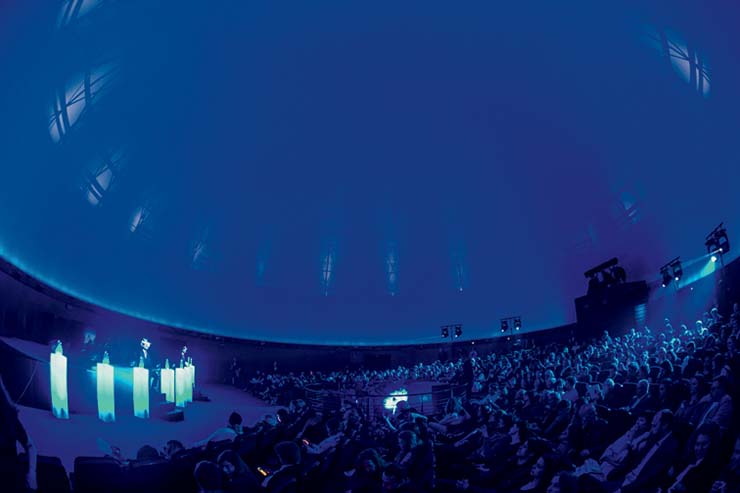
Innovation guests in the Large Star Hall
|
|
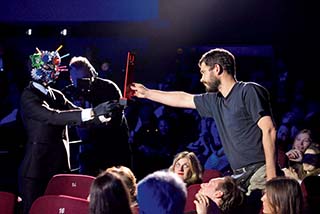
Andrey Kuzkin became the winner in Book of the Year:
Theory and History of Contemporary Art
|
The introduction of the new nominations all but entailed a
complete abolishment of an old one titled Theory, Practice, Art Studies. The
thing is, the state-assigned budget was not supposed to grow
and the nomination itself seemed somewhat stale to the organizers.
“Do people read art books in the era of digital media and multimedia
technologies?” — such question was raised when the nominations were being
discussed. “We think they do”, answered the U-ART foundation, “so it’s
important to read, write, publish and award.” Thus the new Innovation
received one more nomination created, organized and supported by the
foundation. According to Iveta Manasherova, the idea was “to support
the tradition of giving the Theory, Practice, Art Studies award, unofficially
known as the ‘Book Award’. We believe that although research works on
contemporary art may not be so noticeable as flashy visual projects, they are
still essential and need support and promotion.”
Books demand a special attitude and attentive reading. All
submitted applications were passed on to U-ART’s expert board created
specifically to give the award in that nomination. The members
included: Dmitri Mordvintsev, designer and publisher; Marina Elzesser, State
Tretyakov Gallery’s Deputy General Director for Educational Activity and
Publishing; Vitali Patsiukov, art historian, curator, Head of
Interdisciplinary Programs at the National Centre for Contemporary Arts; Danila
Bulatov, curator, researcher at the Pushkin State Museum of Fine Arts;
Sergey Khachaturov, a Russian art critic, theorist, curator; Iveta Manasherova,
art historian, curator, establisher of the U-ART Foundation for Charity and
Culture.
|
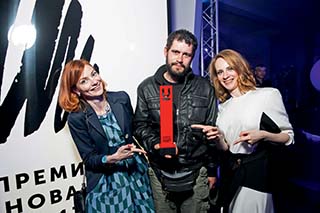
Olga Muromtseva, Andrey Kuzkin and Ekaterina Kibovskaya
with U-Art’s special prize
|
Five authors became the nominees and interestingly
enough, three of the works were editions of Moscow Museum of Modern
Art. The museum keeps justifying its name and remains one of the leading
institutions that study modern Russian art.
It was quite a dilemma to choose the winner as the
nomination traditionally included editions varying in genres and formats:
theoretical research works, albums, memoirs… The word ‘book’
in the nomination title played a key role.
The experts unanimously agreed that the book is a
unity of design and contents, a synthesis of textual and illustrational
material. And certainly, ‘the book of the year’ should be
innovative as the spirit of the award suggests… Basing on those
criteria, the board chose the winners: the illustrator Andrey Kuzkin and his
co-author curator Natalya Tamruchi.
Kirill Gluschenko, the author of the project
Wonderful Is the Image of Our Weekdays won in the New Generation nomination.
Leonid Tishkov became the Artist of the Year while the Curator of the
Year was given to Alexander Burenkov for his Planned Aging exposition. There
were two more prizes awarded in non-competitive nominations: the artist
Viktor Pivovarov received the Contributor to Contemporary Russian Art
award while the Supporter of Contemporary Russian Art was given
to Sofya and Roman Trotsenko, founders of the WINZAVOD Centre
for Contemporary Art.
This year the ceremony was held at the Moscow
Planetarium. It was opened with a multimedia show inspired by a star map and
Viktor Pivovarov’s works. Shining constellations lit the dome hall and
the guests heard Joseph Brodsky’s poem ‘As for the starts, they are
always on…’ The ceremony was laconic and spectacular.
Text: Olga Muromtseva
Photo: Dmitry Chuntul

Mikhail Karasik. Constructivism and the Other.
MMoMA. Moscow, 2016.
|
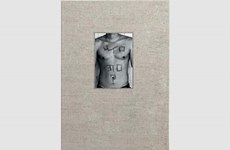
Andrey Kuzkin. Right to Live.
MMoMA. Moscow, 2016.
|

Mikhail Yampolsky. Prigov: Artistic Nominalism Essays. Moscow: New Literary Review, 2016.
|

Piranesi. Before and After. Italy — Russia. 18th-21st Centuries. SMoFI. Moscow, 2016.
|
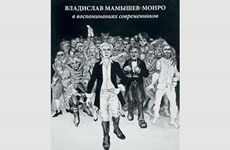
Vladislav Mamyshev-Monroe in Memoirs of His Contemporaries. Collaboration of MMoMA, Vladislav Mamyshev-Monroe Foundation, and Artguide Editions. Moscow, 2016.
|

|
15 September 2017
Many books are written about Moscow. Thousands of poems and songs are dedicated to the city. Countless images of it can be found in graphic arts and cinematography. The capital has been transforming from one era to another. Like a human being, the city changed its temper and moods with age, however, at all times it maintained its unique atmosphere. Every person, be it a Muscovite or a visitor, had, has and will have his or her own Moscow: favorite places and routes, warm memories and nostalgic feelings.
20 June 2017
Back at the time when Vivarte, a chamber music festival, announced its first programs at the Tretyakov Gallery it was called a direct competitor — and even an epigone — of the famous Svyatoslav Richter’s December Nights. Held at the Pushkin Museum, the latter combined music and painting too. However, Vivarte’s organizers carried out their project to a high standard proving the new festival had its own face which, judging by the huge interest it aroused, would soon be recognizable all too well.
6 June 2017
The State Russian Museum with the participation of Alexei Jawlensky's Archives and with the assistance of the U-ART Foundation prepared a large-scale international project dedicated to the creative work of the Russian artist Alexei Jawlensky and his son Andreas. The grand opening of the “Alexei and Andreas Jawlensky. Adventures in Color” exhibition took place on 10 August 2017 in the branch of the Russian Museum in Malaga. It is planned to bring the exposition from Spain to St. Petersburg, Russia, where it will be shown in the halls of the Russian Museum.
4 June 2017
An award ceremony for the “Innovation 2017” State award laureates in the area of modern art was held in the Moscow Planetarium in the evening of 30 May. A strategic partner of the award was U-Art foundation, and the sponsor is UNIDENT Group.
26 December 2016
Russian media did not ignore the international cello festival — virtually every concert of the program provoked the interest of journalists, and the artistic director and guests of the festival became the heroes of many publications. Let's summarize the reviews.
Back













